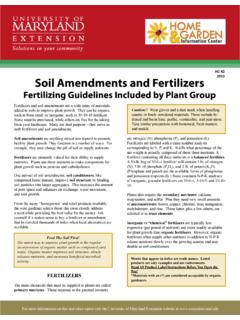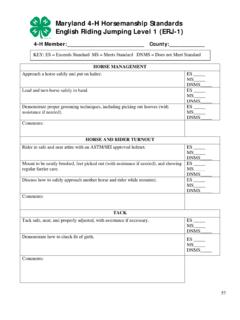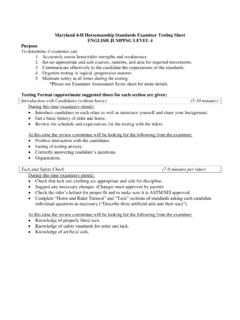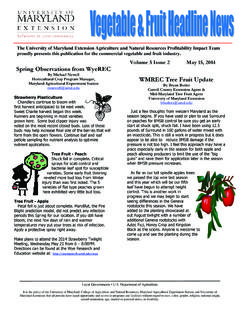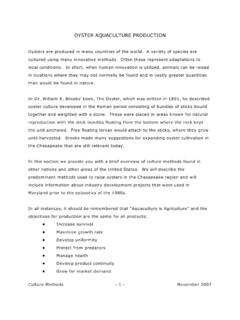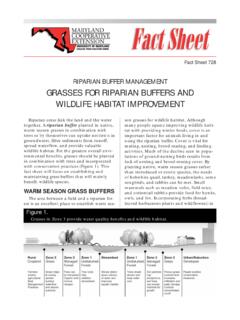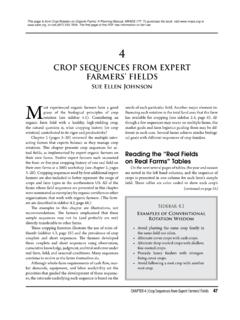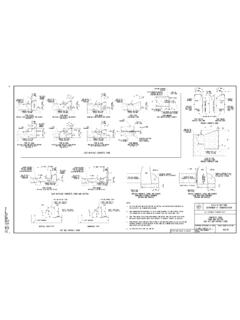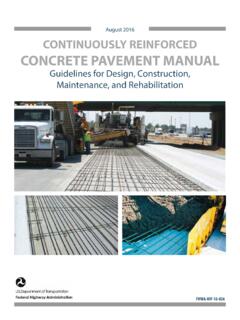Transcription of Permeable Pavement Fact Sheet Information for Howard ...
1 Permeable Pavement fact Sheet Information for Howard County, Maryland Homeowners Purpose of this fact Sheet : To provide objective Information about Permeable Pavement for Howard County, Maryland homeowners who may wish to install or retrofit a Permeable Pavement driveway, patio or sidewalk on their property. Some of the references cited apply to commercial or public spaces and are provided only to give the homeowner background Information about Permeable Pavement . Vendor Information was excluded except for some illustrations. What is Permeable Pavement ?
2 In this document the term Permeable Pavement will be used most often for the sake of consistency, however the terms porous and pervious are often used in the literature. In this document these terms will be considered interchangeable. For those who will be doing further searching on the Internet or in other sources, terms often used are: pervious pavers, pervious concrete , porous asphalt, resin- bound paving, open-jointed blocks or cells and porous turf. Permeable Pavement is a method of paving that allows stormwater to seep into the ground as it falls rather than running off into storm drains, waterways and eventually the Chesapeake Bay.
3 Permeable pavements function similarly to sand filters, in that they filter the water by forcing it to pass through different aggregate sizes and typically some sort of filter fabric. Therefore most of the treatment is through physical (or mechanical) processes. As precipitation falls on the Pavement it infiltrates down into the storage basin where it is slowly released into the surrounding soil. 1. Long term research on Permeable pavers shows their effective removal of pollutants such as total suspended solids, total phosphorous, total nitrogen zinc, motor oil, and copper.
4 In the void spaces, naturally occurring micro-organisms break down hydrocarbons and metals adhere. 2. By stopping stormwater from pooling and flowing away, porous paving can help recharge underlying aquifers and reduces peak flows and flooding. That means that streams flow more consistently and at cooler temperatures, contributing to healthy ecosystems. Stormwater pollutants are broken down in the soil instead of being carried to surface waters. 12 Below is a graphic that illustrates the relationship between surface flow, groundwater flow and aquifers.
5 Illustration: For more Information about aquifers see What is an Aquifer? (Idaho State University-Reference 3). Depending on design, paving material, soil type and rainfall, Permeable paving can infiltrate as much as 70% to 80% of annual rainfall. 4 Combining Permeable Pavement with other Low Impact Development (LID) strategies, such as vegetated swales, increases the overall effectiveness of Permeable paving. According to Mark W. Clark and Glenn A. Acomb (Reference 5) the percent of rainfall converted to runoff volume for various Pavement scenarios is: Asphalt with no swale--51%.
6 Asphalt with swale--34%. Cement with swale--32%. Permeable Pavement with swale--10%. For the best success, a few key factors must be considered when undertaking a project involving Permeable Pavement alternatives: 1. Choose the correct Pavement for the task at hand. Permeable Pavement options vary depending upon whether the Pavement will receive light, moderate, or heavy use. Therefore, it is imperative to choose the right material for the expected use. 2. Prepare the subbase. Choose the appropriate subbase preparation for the application. The type of subbase used and depth of the subbase materials determine the amount of infiltration provided, as well as durability over time.
7 In locations with poor soils or numerous freeze-thaw cycles, a thicker subbase is usually required. 3. Install properly. In many cases, the manufacturer will install, oversee the installation, or recommend certified contractors. 4. Understand and carry out maintenance requirements. Appropriate maintenance is critical to the continued effectiveness and durability of Permeable Pavement materials. 6. A homeowner might consider Permeable paving for a driveway or walkway. A patio that does not adjoin the house might also be considered. Permeable paving immediately adjacent to the house may not be advisable since water should always be directed away from the house.
8 As mentioned above it is important to choose the correct Pavement for the planned project. Permeable Pavement is designed to carry moderately heavy loads, such as automobiles. If Permeable Pavement will be used in a ..setting that involves vehicles, the Pavement surface must be able to support the maximum anticipated traffic load. The structural design process will vary according to the type of Pavement selected, and the manufacturer's specific recommendations should be consulted. The thickness of the Permeable Pavement and reservoir layer must be sized to support structural loads and to temporarily store the design storm volume ( , the water quality, channel protection, and/or flood control volumes).
9 On most new development and redevelopment sites, the structural support requirements will dictate the depth of the underlying stone reservoir. 7. concrete block the highest load bearing capacities, followed by porous asphalt and concrete pavements and then plastic grid pavers. 6. Three of the major types of Permeable pavements are compared in the table below from The Virginia DCR Stormwater Design Specification No. 7 7. Table Comparative Properties of the Three Major Permeable Pavement Types Design Factor Porous concrete (PC) Porous Asphalt (PA) Interlocking Pavers (IP).
10 Scale of Application Small and large scale paving Small and large scale paving Micro, small and large applications applications scale paving applications Pavement Thickness1 5 to 8 inches 3 to 4 inches 3 inches 1, 8. Bedding Layer 1, 8 None 2 inches No. 57 stone 2 inches of No. 8 stone Reservoir Layer 2, 8 No. 57 stone No. 2 stone No. 2 stone 3-4 inches of stone Construction Properties 3 Cast in place, seven day cure, must be Cast in place, 24 hour cure No cure period; manual or covered mechanical installation of pre-manufactured units, over 5000 sf/day per machine Design Permeability4 10 feet/day 6 feet/day 2 feet/day Construction $ to $ ft.
